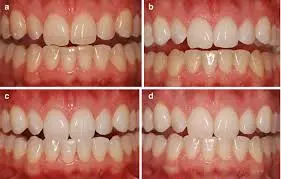- Home
- Medical news & Guidelines
- Anesthesiology
- Cardiology and CTVS
- Critical Care
- Dentistry
- Dermatology
- Diabetes and Endocrinology
- ENT
- Gastroenterology
- Medicine
- Nephrology
- Neurology
- Obstretics-Gynaecology
- Oncology
- Ophthalmology
- Orthopaedics
- Pediatrics-Neonatology
- Psychiatry
- Pulmonology
- Radiology
- Surgery
- Urology
- Laboratory Medicine
- Diet
- Nursing
- Paramedical
- Physiotherapy
- Health news
- Fact Check
- Bone Health Fact Check
- Brain Health Fact Check
- Cancer Related Fact Check
- Child Care Fact Check
- Dental and oral health fact check
- Diabetes and metabolic health fact check
- Diet and Nutrition Fact Check
- Eye and ENT Care Fact Check
- Fitness fact check
- Gut health fact check
- Heart health fact check
- Kidney health fact check
- Medical education fact check
- Men's health fact check
- Respiratory fact check
- Skin and hair care fact check
- Vaccine and Immunization fact check
- Women's health fact check
- AYUSH
- State News
- Andaman and Nicobar Islands
- Andhra Pradesh
- Arunachal Pradesh
- Assam
- Bihar
- Chandigarh
- Chattisgarh
- Dadra and Nagar Haveli
- Daman and Diu
- Delhi
- Goa
- Gujarat
- Haryana
- Himachal Pradesh
- Jammu & Kashmir
- Jharkhand
- Karnataka
- Kerala
- Ladakh
- Lakshadweep
- Madhya Pradesh
- Maharashtra
- Manipur
- Meghalaya
- Mizoram
- Nagaland
- Odisha
- Puducherry
- Punjab
- Rajasthan
- Sikkim
- Tamil Nadu
- Telangana
- Tripura
- Uttar Pradesh
- Uttrakhand
- West Bengal
- Medical Education
- Industry
Antioxidants Preserve Bleached Enamel Color but Acidic Gels May Pose Enamel Risk: Study

Researchers have found in a new study that antioxidant agents maintained color stability after tooth bleaching and showed high antioxidant activity. However, QUI and QC gels had acidic pH, which may risk enamel damage. Therefore clinically, these antioxidants can aid bond strength recovery without compromising esthetic outcomes, but acidic formulations should be used cautiously.
This study evaluated the color stability of enamel submitted to 10% hydrogen peroxide (HP) followed by antioxidants agents, and the pH and antioxidant activity (AA%) of these agents. Bovine enamel-dentin blocks were randomly distributed into groups (n=10/group): GNC (negative control: no treatment); GPC (positive control: bleaching only); TOC_10% (HP+10% α-tocopherol); GT_10% (HP+10% green tea extract); GS_5% (HP+5% grape seed extract); SA_10% (HP+10% sodium ascorbate); QUI_10% (HP+10% quinoa extract); and QC_1% (HP+1% quercetin). Color (ΔE00) and whiteness index (ΔWID) changes were analyzed using a digital spectrophotometer.
The pH and AA% were determined using a pH meter and the DPPH method, respectively. Data were analyzed by ANOVA/Tukey’s and Dunnett’s tests (α=0.05). Results At 14 days post-bleaching, GNC promoted the lowest ΔWID and ΔE00 (p<0.05), and no differences were found between GPC and the remaining groups submitted to the antioxidant agents (p>0.05). QC_1% and QUI_10% exhibited acidic pH levels (3.64 and 4.75, respectively), whereas TOC_10% and GS_5% exhibited alkaline pH (7.07 and 7.64, respectively). No differences in AA% were found between the agents (p>0.05), ranging from 92.6 to 97.6%. The antioxidant agents did not interfere in bleached enamel color stability, showing satisfactory antioxidant activity. However, QUI and QC gels displayed acidic pH.
Clinical significance: The antioxidants evaluated showed high AA% and no impact on post-bleaching color stability, suggesting that their capacity to recover bond strength demonstrated elsewhere would not compromise the esthetic efficacy of tooth bleaching. However, those with acidic pH should be used with caution due to potential enamel damage.
Reference:
Alves RO, Nunes GP, Martins TP, Alves de Toledo PT, Ragghianti MHF, Delbem ACB. Effect of Quercetin-Doped Hydrogen Peroxide Gels on Enamel Properties: An In Vitro Study. Gels. 2025 Apr 27;11(5):325. doi: 10.3390/gels11050325. PMID: 40422345; PMCID: PMC12111415.
Dr. Shravani Dali has completed her BDS from Pravara institute of medical sciences, loni. Following which she extensively worked in the healthcare sector for 2+ years. She has been actively involved in writing blogs in field of health and wellness. Currently she is pursuing her Masters of public health-health administration from Tata institute of social sciences. She can be contacted at editorial@medicaldialogues.in.
Dr Kamal Kant Kohli-MBBS, DTCD- a chest specialist with more than 30 years of practice and a flair for writing clinical articles, Dr Kamal Kant Kohli joined Medical Dialogues as a Chief Editor of Medical News. Besides writing articles, as an editor, he proofreads and verifies all the medical content published on Medical Dialogues including those coming from journals, studies,medical conferences,guidelines etc. Email: drkohli@medicaldialogues.in. Contact no. 011-43720751


